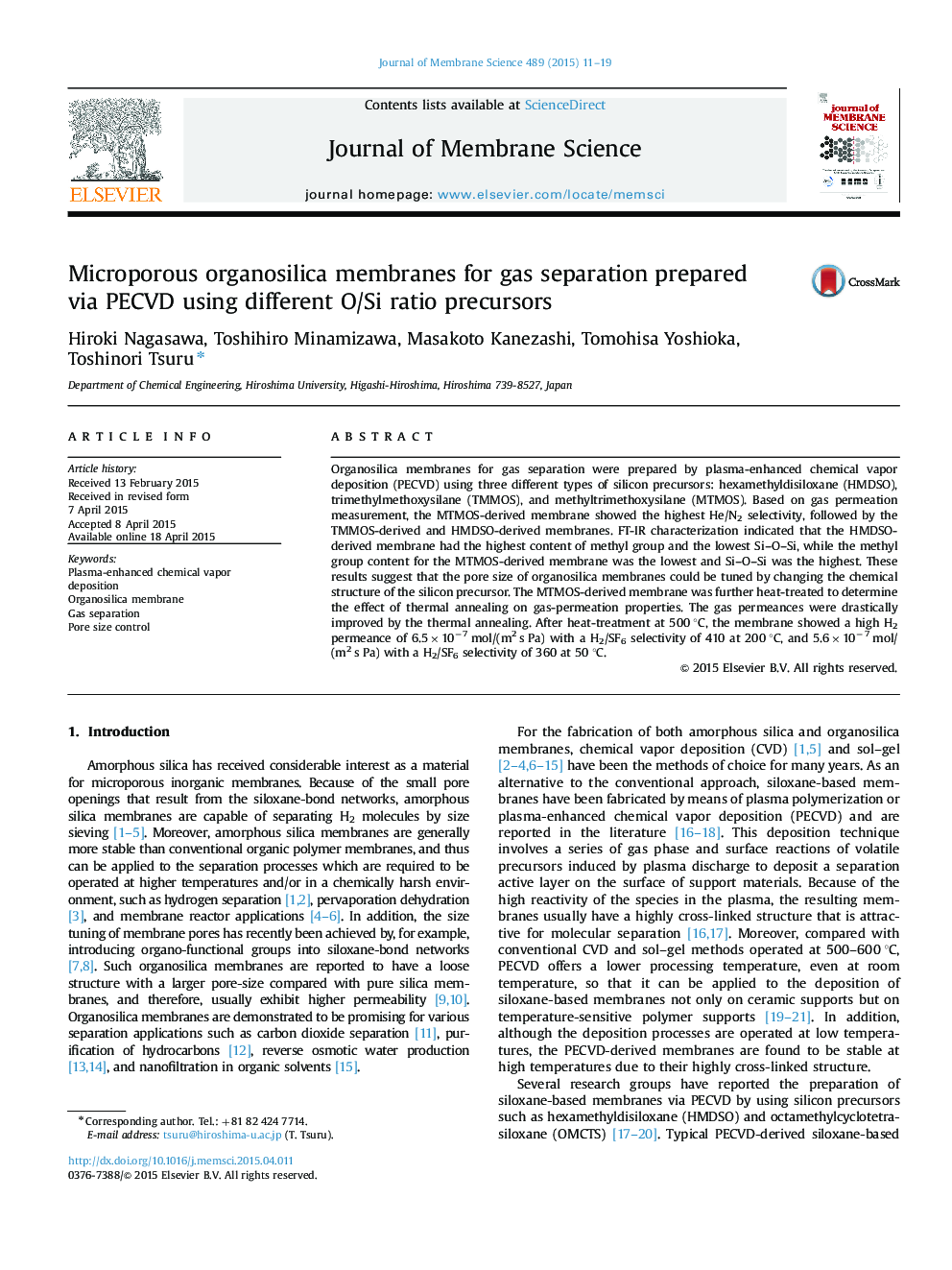| Article ID | Journal | Published Year | Pages | File Type |
|---|---|---|---|---|
| 632883 | Journal of Membrane Science | 2015 | 9 Pages |
Abstract
Organosilica membranes for gas separation were prepared by plasma-enhanced chemical vapor deposition (PECVD) using three different types of silicon precursors: hexamethyldisiloxane (HMDSO), trimethylmethoxysilane (TMMOS), and methyltrimethoxysilane (MTMOS). Based on gas permeation measurement, the MTMOS-derived membrane showed the highest He/N2 selectivity, followed by the TMMOS-derived and HMDSO-derived membranes. FT-IR characterization indicated that the HMDSO-derived membrane had the highest content of methyl group and the lowest SiOSi, while the methyl group content for the MTMOS-derived membrane was the lowest and SiOSi was the highest. These results suggest that the pore size of organosilica membranes could be tuned by changing the chemical structure of the silicon precursor. The MTMOS-derived membrane was further heat-treated to determine the effect of thermal annealing on gas-permeation properties. The gas permeances were drastically improved by the thermal annealing. After heat-treatment at 500 °C, the membrane showed a high H2 permeance of 6.5Ã10â7 mol/(m2 s Pa) with a H2/SF6 selectivity of 410 at 200 °C, and 5.6Ã10â7 mol/(m2 s Pa) with a H2/SF6 selectivity of 360 at 50 °C.
Keywords
Related Topics
Physical Sciences and Engineering
Chemical Engineering
Filtration and Separation
Authors
Hiroki Nagasawa, Toshihiro Minamizawa, Masakoto Kanezashi, Tomohisa Yoshioka, Toshinori Tsuru,
